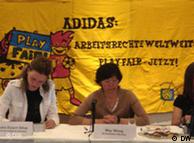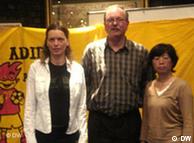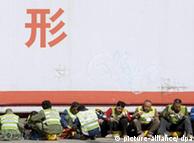At Kodak, Some Old Things Are New Again Published: May 2, 2008
ROCHESTER — Steven J. Sasson, an electrical engineer who invented the first digital camera at Eastman Kodak in the 1970s, remembers well management’s dismay at his feat.
Skip to next paragraph 
James Rajotte for The New York Times
Steven J. Sasson, an electrical engineer, created the first digital camera.

James Rajotte for The New York Times
Allan Camp, a technician at Kodak’s inkjet development center in Rochester, works on the development of print heads for printers.
“My prototype was big as a toaster, but the technical people loved it,” Mr. Sasson said. “But it was filmless photography, so management’s reaction was, ‘that’s cute — but don’t tell anyone about it.’ ”
Since then, of course, Kodak, which once considered itself the Bell Labs of chemistry, has embraced the digital world and the researchers who understand it.
“The shift in research focus has been just tremendous,” said John D. Ward, a lecturer at the Rochester Institute of Technology who worked for Kodak for 20 years. Or, as Mr. Sasson put it, “Getting a digital idea accepted has sure gotten a lot easier.”
Indeed, physicists, electrical engineers and all sorts of people who are more comfortable with binary code than molecules are wending their way up through Kodak’s research labs. “When I joined, I knew my salary came from film sales,” said Dr. Majid Rabbani, an electrical engineer who joined Kodak in 1983. “But I knew that I would eventually produce paychecks for others.”
Kodak is by no means thriving. Digital products are nowhere near filling the profit vacuum left by evaporating sales of film. Its work force is about a fifth of the size it was two decades ago, and it continues to lose money. Its share price remains depressed.
But, finally, digital products are flowing from the labs. Kodak recently introduced a pocket-size television, which is selling in Japan for about $285. It has software that lets owners of multiplexes track what is showing on each screen. It has a tiny sensor small enough to fit into a cellphone, yet acute enough to capture images in low light.
The company now has digital techniques that can remove scratches and otherwise enhance old movies. It has found more efficient ways to make O.L.E.D.’s — organic light-emitting diodes — for displays in cameras, cellphones and televisions.
This month, Kodak will introduce Stream, a continuous inkjet printer that can churn out customized items like bill inserts at extremely high speeds. It is working on ways to capture and project three-dimensional movies.
And, of course, it continues to prompt consumers to take pictures with Kodak cameras, store them at Kodak sites online, display them in Kodak digital picture frames and print them on Kodak printers that use Kodak inks and papers.
“They want to be the World Bank of Imaging, to offer a Kodak-branded solution for anything you might want to do with images,” said Matthew Troy, an analyst with Citigroup Investment Research, who recently upgraded Kodak to hold from sell.
Paradoxically, many of the new products are based on work Kodak began, but abandoned, years ago. The precursor technology to Stream, for example, pushed ink through a single nozzle. Stream has thousands of holes and uses a method called air deflection to separate drops of ink and control the speed and order in which they are deposited on a page.
“I remember wandering through the labs in 2003, and seeing the theoretical model that could become Stream,” said Philip J. Faraci, Kodak’s president. “The technology was half-baked, but it was a real breakthrough.”
Other digital technologies languished as well, said Bill Lloyd, the chief technology officer. “I’ve been here five years, and I’m still learning about all the things they already have,” he said. “It seems Kodak had developed antibodies against anything that might compete with film.”
It took what many analysts say was a near-death experience to change that. Kodak, a film titan in the 20th century, entered the next one in danger of being mowed down by the digital juggernaut. Electronics companies like Sony were siphoning away the photography market, while giants like Hewlett-Packard and Xerox had a lock on printers.
“This was a supertanker that came close to capsizing,” said Timothy M. Ghriskey, chief investment officer at Solaris Asset Management, which long ago sold its Kodak shares.
But in 2003 Kodak hired Antonio Perez away from Hewlett-Packard. Mr. Perez, now the chief executive, has sprinkled Hewlett alumni — including Mr. Lloyd and Mr. Faraci — throughout the executive suite.
Together, they have turned Kodak inside out. They exited a mainstay business, health imaging, and took the company back into inkjet printing. And they mined the patent archives for intellectual property, a step that is yielding well above $250 million a year in licensing fees. One recent example: Kodak is licensing out a method to embed a chemical signature in materials that enables manufacturers and retailers to scan for counterfeit products.
“When it comes to intellectual property, they’re finally acting like a for-profit corporation instead of a university,” said Ulysses A. Yannas, a broker at Buckman, Buckman & Reid who has been buying Kodak shares.
The Hewlett alumni introduced an expensive consumer printer that runs on inexpensive ink — tantamount to heresy in an industry that has always sold cheap hardware in hopes of making money on high-margin inks and toners. “We were entering an entrenched market, so we went after the biggest dissatisfier for consumers, the cost of ink,” said Steven A. Billow, a manager in the inkjet systems division
And, perhaps most traumatic for a company that was known as the Great Yellow Father in Rochester, they eliminated jobs. Kodak, which employed 145,300 people 20 years ago, ended 2007 with 26,900 employees.
Last year, $6.4 billion of its $10.3 billion in revenue came from digital products, but it earned only $179 million from them. And on Thursday, Kodak announced a first-quarter loss of $114 million on revenue of $2.09 billion. It was an improvement over the first quarter of 2007, when it lost $175 million on revenue of $2.08 billion. And Kodak’s revenue from digital products rose 10 percent, to $1.366 billion.
Mr. Perez told analysts he had “full confidence” that 2008 would be a good year for Kodak, but investors did not share it. Its shares fell 67 cents on Thursday, to $17.22. After peaking at $94.25 in February 1997, they have steadily trended down.
Analysts remain wary. “The stuff that comes out of the Kodak labs is impressive, but it does not give them a leg up on Hewlett or Xerox,” said Shannon S. Cross, an analyst at Cross Research who rates Kodak a sell. Nor is she impressed with Kodak’s consumer printer. “Consumers buy on the cost of hardware, not of total ownership,” she said.
The Fujifilm Corporation, the Japanese company that was Kodak’s main film rival, is not out of the picture, either. It recently moved its chemistry and electronics labs next door to each other. “If they work as a single team at the same location, R.& D. productivity is significantly enhanced,” Shinpei Ikenoue, the head of research at Fujifilm, said in an e-mail message.
Still, analysts no longer predict Kodak’s demise. “Kodak still has the most color specialists,” Ms. Cross said.
There are a lot fewer of them, though. The research ranks have been cut in half, to about 1,000 people. ”We watched a lot of chemists get downsized out of jobs,” said Dr. Margaret J. Helber, an organic chemist who joined Kodak 18 years ago. “The rest of us soldiered on for several years, not knowing if we would remain relevant in the transformed Kodak.”
They did, but in radically altered jobs. For one thing, researchers who rarely interacted are now expected to collaborate.
“This used to be a closed society, where some researchers kept their records in locked safes,” said Dr. John D. Baloga, director of analytical science and a Kodak employee for 31 years. “Some of them were crushed when the secrecy went away.”
Researchers also must now work with the business managers. Amit Singhal, a computer scientist who joined Kodak in 1998, said he had biweekly meetings with the business units. “I never used to see them at all,” he said.
Indeed, until recently, functions like finance, marketing and research all reported up through their own hierarchies, ultimately to the chief executive. Today, everyone involved in creating, selling and servicing inkjet printers is grouped together, as are those dealing with cameras, sensors or other products.
“Finally, we have a structure that promotes commercialization of research,” Mr. Faraci said.
The research chiefs do hold quarterly meetings to uncover technologies that can cross product boundaries. Marketing, operations and customer service chiefs meet regularly as well, to discuss which products and services can be bundled together for sale, or to see whether economies of scale can be achieved. But day to day, researchers and marketers deal more with each other than with their functional peers.
“Researchers invent something, demonstrate its feasibility, talk about commercializing it,” said Julie Gerstenberger, vice president for external alliances. “But these days, it’s all in collaboration with the business side.”
 Bildunterschrift: Großansicht des Bildes mit der Bildunterschrift: 新闻发布会现场,活动组织方德国"基督教动议罗眉洛"桑德拉·杜什·西尔娃和黄月媚女士(从左至右)
Bildunterschrift: Großansicht des Bildes mit der Bildunterschrift: 新闻发布会现场,活动组织方德国"基督教动议罗眉洛"桑德拉·杜什·西尔娃和黄月媚女士(从左至右) Bildunterschrift: Großansicht des Bildes mit der Bildunterschrift: 组织人员合影,从左至右,桑德拉·杜什·西尔娃,科隆德国工会联盟主席沃夫冈·于伦伯格·冯·达文博士和黄月媚女士
Bildunterschrift: Großansicht des Bildes mit der Bildunterschrift: 组织人员合影,从左至右,桑德拉·杜什·西尔娃,科隆德国工会联盟主席沃夫冈·于伦伯格·冯·达文博士和黄月媚女士

 喜歡逛無印店面的松井,當年出任社長之際,發現再不處理這個問題,無印將走不到未來。於是一把火就把所有存貨燒光。損失了三十八億日圓(約十一億台幣)的服裝成本之後,從新開始。
喜歡逛無印店面的松井,當年出任社長之際,發現再不處理這個問題,無印將走不到未來。於是一把火就把所有存貨燒光。損失了三十八億日圓(約十一億台幣)的服裝成本之後,從新開始。 








 奧 利奧在美國市場佔據銷售榜首的位置已經很長時間。但是卡夫食品(Kraft Foods Inc.)不得不對奧利奧進行改頭換面才能使它在全球人口最多的國家獲得青睞。儘管奧利奧在中國的銷售額僅佔其全球年銷售額372億美元的一小部分﹐但是 它在中國的發展過程卻是公司首席執行長艾琳•羅森費爾德(Irene Rosenfeld)在這家食品巨頭中盡力推廣的企業改革模式的一個典範。
奧 利奧在美國市場佔據銷售榜首的位置已經很長時間。但是卡夫食品(Kraft Foods Inc.)不得不對奧利奧進行改頭換面才能使它在全球人口最多的國家獲得青睞。儘管奧利奧在中國的銷售額僅佔其全球年銷售額372億美元的一小部分﹐但是 它在中國的發展過程卻是公司首席執行長艾琳•羅森費爾德(Irene Rosenfeld)在這家食品巨頭中盡力推廣的企業改革模式的一個典範。